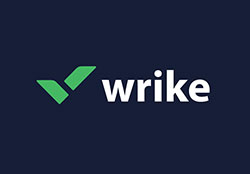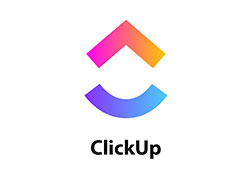Imagine sailing a complex project to the shores of success—a feat demanding not just a map, but a compass that keeps you zeroed in on your north star.
That’s where project management OKRs (Objective Key Results) steer the ship. In this bustling digital harbor where timelines clash like waves, OKRs illuminate the path, anchoring clarity to our ambitious endeavors.
Within this article, we’re diving into the robust framework that’s turbocharged teams from scrappy startups to tech titans like Google.
We’re tackling the undeniable need to converge vision with execution, morphing lofty ambitions into tangible outcomes.
By the final full stop, you’ll have a treasure trove of insights: from setting razor-sharp objectives to aligning your crew with strategic key results.
We’ll plot the course—navigating through performance metrics, tracking task milestones, and optimizing workflow—all to help your team sail smoothly towards efficiency improvement.
Prepare to unshackle the power of OKRs—your ultimate helm for navigating the project management sea.
Key takeaways
- Integration with Project Management: OKRs complement project management by serving as anchor points for structuring and aligning goals within an organization, promoting continuous improvement and team readiness
- Defining and Tracking Progress: Key Results within OKRs are used as milestones to gauge project progress and can be tailored to track specific achievements, such as increasing social media followers or improving workflow efficiencies
- Historical Significance and Impact: The OKR methodology has its roots in management theories from the 1950s and has been adopted by major companies like Google, Amazon, and Microsoft, demonstrating its effectiveness in resource savings and strategic planning
- Implementation Strategy: Effective OKR implementation involves prioritizing critical tasks, setting up a detailed framework, maintaining transparency, measuring performance, and providing the necessary tools and resources for project teams
Most Popular Examples and Appliances
You can look at the key results as project milestones to track project progress. That can provide insight into how fast you can achieve a set of goals. This is useful even when aiming for a long-term goal like better brand awareness through cross-functional collaboration. However, project management OKRs provide more value than that.
The modern business landscape creates multiple angles to approach such a task. Yet, the competition is fierce and might’ve secured much of the available paths for itself. Thus, you’ll need to take one step at a time. For instance, when using social profiles to raise brand awareness, there are:
The key result number one: Achieve over 200K YouTube subscribers;
The key result number two: Achieve over 350K YT followers;
The key result number three: Achieve over 100K Facebook followers.
Other Common Types of Deliverables
Example of a goal: Streamline the overall workflow by using project management OKRs, focusing on task management and continuous improvement.
Even such a straightforward goal comprises many areas you can improve. For starters, include more specific sub-goals you can complete. Also, ask yourself why your team isn’t effective enough. Therefore, consider this set of goals:
The key result number one: Bump up the training hours to a number above 20;
The key result number two: Disable the possibility for sudden client change requests;
The key result number three: Limit billable hours within the 20-30 weekly range.
Applying these practical solutions, especially when using project management software, will not force you to stray off the critical path. Therefore, the internal processes won’t suffer delays, and there won’t be any resource conflict.
Historic Evolution and Results
Back in the 1950s, Peter Drucker introduced the concept of goal setting with the Management by Objectives method. In 1968, one of the Intel founders, Andrew Grove, further envisioned MBO, emphasizing performance metrics. Next, in 1974, John Doerr became an Intel employee and continued to add to the OKR foundation, focusing on strategic planning.

Later, he joined Kleiner Perkins, which led him into Google’s ranks. As an adviser for the tech giant, he presented OKR to Google’s founders. Soon afterward, Sergey Brin and Larry Page began using OKRs, emphasizing goal alignment and task management, to tackle their daily tasks.
Seeing their results, similar companies started copying their approach. The list includes titans like Amazon and Microsoft. As per statistics, brands utilizing modern project management OKRs, focusing on continuous improvement and performance tracking, end up saving 28 times more resources.
Suitable Areas of Appliances
In essence, project management OKRs provide you with the means to set a clear direction for the project team, ensuring goal cascading and stakeholder alignment. Even long-term wise, you can craft a feasible action plan and easily implement it. As a result, OKRs can positively alter the basics of a company’s policies, emphasizing outcome measurement and success criteria.
OKRs stem from basic questions like what is the value you’re aiming to produce? If there aren’t many prospects on the horizon, why keep up with it? So, OKRs ensure your goal remains worth fighting for, acting as anchor points for effective internal structuring. These are other common objectives:
- Motivate your employees regarding the common goal
- Unify the team efforts and reduce the risks
- Set the grounds for a productive fiscal period, focusing on goal achievement and feedback loop
Although these goals are broad, you can opt for a more hands-on approach. That often means scheduling frequent review periods, emphasizing project review and feedback loop, that all employees must participate in. This might prove essential regarding quality assurance and high KPI ratings.
Implementation and Setting Up a Workflow

1. Hone In On the Critical Tasks
Doubling down on the most essential objectives, focusing on task prioritization, is the first OKR rule. Once you have an outcome in mind, envision a path toward completion. This ties in with the organizational side of things, emphasizing project scope and resource allocation. Thus, break down those values into actionable sets of project milestones. This is how to implement project management OKRs:
2. Micromanage the OKR Framework
To identify all OKR focal points, be objective in your expectations. For example, follow this outline:
- What is your preferred outcome?
- Set up quality assurance channels, focusing on performance tracking
- Are those goals the same as the company’s strategic planning agenda?
- Calculate the limits of the timeframe for any task management
- Derive a detailed action plan, emphasizing goal alignment
- Group up the objectives according to the relevancy factor
- Find a way to summarize and compare your levels of performance metrics
- Avoid putting too much pressure on your team
- Divide the broader objectives into sub-goals and follow them closely, focusing on project milestones
- Acknowledge and pay tribute to certain achievements to boost the team’s spirit. This will result in even better KPI metrics in the future.
3. Put the OKRs in a Single Document and Grant Everyone Access
The OKR method, emphasizing goal alignment and strategic planning, is all about transparency and inclusiveness. Hence, all teams should get vocal about improving the task management and workflow. This might become a challenge when using the work-from-home model, though, especially when considering stakeholder alignment.
4. Closely Measure Your Quarterly Earnings and Performance Metrics
Once the brainstorming phase concludes, you should have a clear path forward, ensuring goal cascading. That means each cohort provided input when crafting the template. By the way, here’s a great OKR template from ClickUp that can aid in performance tracking.
In practice, most brands reach that stage and then fail to implement OKR examples fully. To get the most out of it, frequent evaluation points and feedback loops are a necessity.
So, consider scheduling weekly OKRs meetings or even one-on-ones. At the end of the quarter, organize an in-depth, company-level project review and OKR review period.
5. Properly Equip the Project Teams with Necessary Tools and Resources
The project manager should use OKR software for all task prioritization and project tasks. Though a fraction of resource allocation and budget management, such tools support quick task completion and continuous improvement.
Nowadays, there are plenty of tools that can help in reaching organizational goals and ensuring goal achievement.
Are you looking for a great project management app?
Here are our recommendations:
FAQ On Project Management OKRs
What Exactly Are Project Management OKRs?
Project Management OKRs boil down to a combo of ambitious goals and clear outcomes. They’re like a GPS—help you pinpoint where you’re headed and how you’ll know when you’ve arrived.
Setting these means you’ve outlined what success looks like with measurable milestones to track progress. It’s project planning with an upgrade.
How Do OKRs Differ from Traditional Project Goals?
OKRs sit in a league of their own with their dual components: aspirations hook arms with measurable key results. Unlike vague objectives, they demand specific, quantifiable outcomes—think SMART criteria on steroids.
They’re not just project deliverables; they’re benchmarks mapping growth and efficiency improvement.
Can You Use OKRs in Agile Project Management?
Absolutely. Injecting OKRs into Agile’s fast-paced, iterative rhythm? Chef’s kiss. They’re like agile’s disciplined older sibling, ensuring the flexibility of sprints aligns with strategic direction. It’s a harmonious marriage where Agile keeps things moving and OKRs keep the destination in sight.
How Often Should You Review Project Management OKRs?
Regular check-ins are essential—think quarterly goals that get eyeballed often to ensure they’re not drifting into the abyss. It’s about a feedback loop that’s constant, tweaking the sails as needed to catch the right winds and stay on course.
Who Should Be Involved in Setting OKRs?
OKRs need a chorus, not a solo voice. Cross-functional collaboration is key here. From team members to leadership, everyone’s voices echo in setting OKRs. It turns individual performance into a symphony of aligned effort, echoing the tune of shared organizational goals.
What Makes a Good Project Management OKR?
Let’s dismantle this: a good OKR uncovers the sweet spot between ambitious and achievable. It’s clear-cut, measurable, and infused with a deadline. It turns the spotlight on outcomes, not just a bunch of tasks. Your OKR isn’t just smart; it’s wise—knows its role in the big picture.
How Specific Should OKRs Be?
Precision is the game. Each OKR should be sharp enough to cut through ambiguity like a knife. General fluff doesn’t stand a chance. Specificity means when you hit a target, there’s no question—you can see the bullseye from a mile away.
Do OKRs Work for Every Type of Project?
Mostly, yes. OKRs are versatile creatures. They can prance across different project landscapes—from software development with JIRA to constructing bridges. But hey, they’re not one-size-fits-all; the nature of some projects might demand a different flavor of goal setting.
How Do You Align Team and Individual OKRs?
Alignment is the choreography that makes individual moves part of a collective dance. Start with the company vision and cascading down, ensuring each individual’s performance metrics tango with team productivity and broader project roadmaps. It’s everyone rowing in unison.
Can OKRs Impact Team Motivation?
When done right, OKRs can be a motivational powerhouse. They turn the spotlight on measurable outcomes, so when a team knocks a key result out of the park, the win is palpable. It fosters a culture of accountability and celebration—elevating both team morale and milestone achievement.
Conclusion
Wrapping up the expedition through the terrain of project management OKRs, it’s clear that they’re not just buzzword bingo. They’re the real deal. The linchpin holding the wheels of progress firmly on track, transforming vision into value delivery—and then some.
So, what to pocket from this journey?
- We’ve climbed the strategic planning cliffs.
- Navigated the murky waters of goal alignment.
- Even danced through the minefields of team productivity boosting.
It’s about drawing the map, marking the X, and charting the course to treasure—with milestones lighting up like beacons.
Remember, the key result areas we’ve carved are not just checkpoints. They’re launchpads—each lifting teams closer to those starry-eyed company visions.
Take these insights. Fold ‘em up. Tuck ‘em in your project manager’s toolkit. They’re the ace up your sleeve when keeping an entire crew pulsing to the beat of progress. The journey doesn’t end. It evolves. With every project cycle, every feedback loop, every outcome measurement, we’re improving, innovating, smashing those targets.
If you liked this article about project management OKRs, you should check out this article about what is crashing in project management.
There are also similar articles discussing project management software for startups, project management forecasting, s curve in project management, and innovation frameworks.
And let’s not forget about articles on lag time in project management, primary and secondary stakeholders, gold plating in project management, and operations management vs project management.
- Ruby’s Realm: What is Ruby Used For? - April 25, 2024
- Preventing Emails From Going To Spam In Gmail with GlockApps - April 25, 2024
- Key Technologies Shaping UX/UI in Web Portal Development - April 25, 2024












